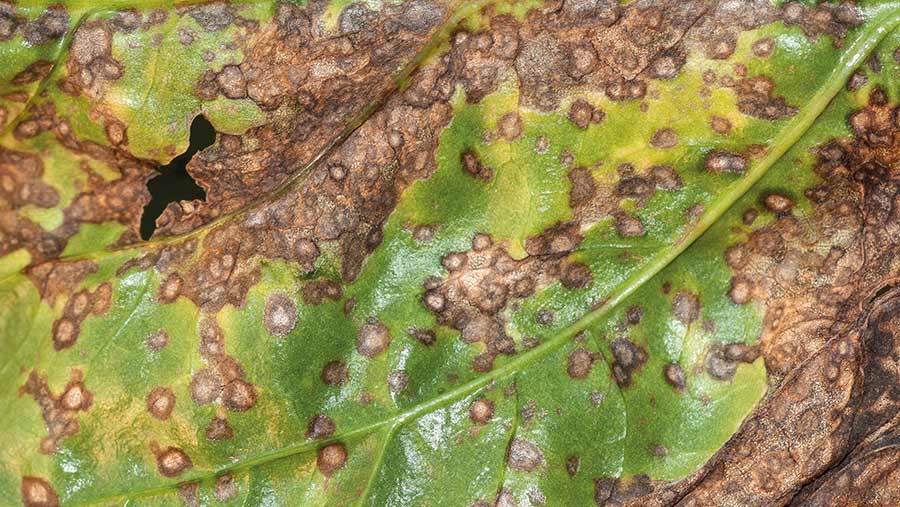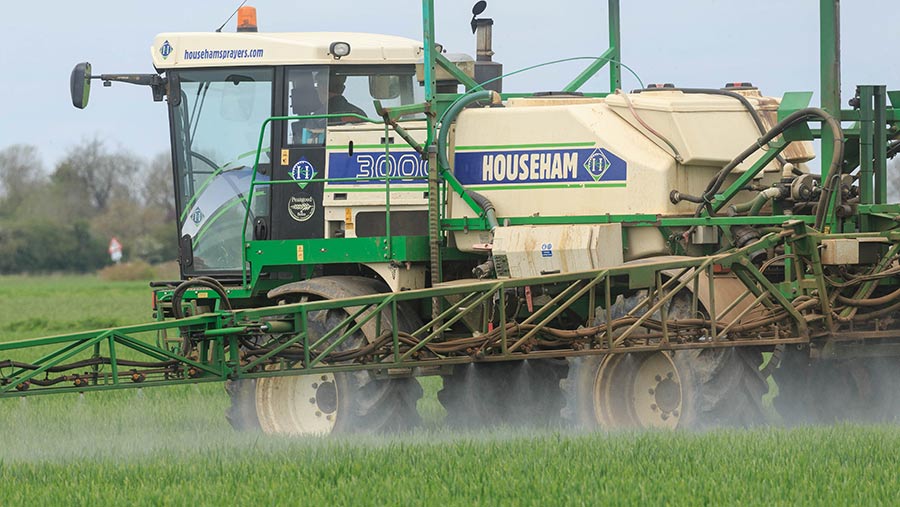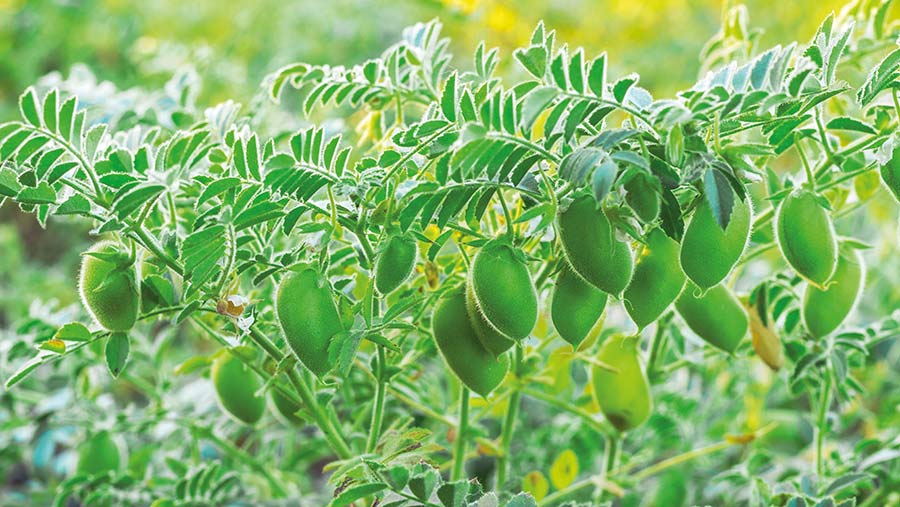3 highlights to see in the Cereals 2023 crop plots
 © Blackthorn Arable
© Blackthorn Arable This year’s Cereals event at the new site in Nottinghamshire features no less than 6ha of crop plots.
Farmers Weekly picks out three highlights that should be on growers’ visit lists.
See also: Why cover crops have to work hard for Cereals event host farm
1. Cercospora-tolerant sugar beet
A relatively new disease in the UK, cercospora can prove very costly as some sugar beet growers found out in the 2020 growing season.
Until recently, the UK has been outside the temperature range that enables the disease to rapidly infect crops in summer. This has meant cercospora has been limited to sporadic patches seen late in the season.
But warmer summers and increased humidity – ideal conditions for the disease – mean it has become economically damaging in British fields.
The 2020 season was especially bad, with the British Beet Research Organisation saying the disease resulted in the canopy destruction of many crops that had also been affected by drought and virus yellows.
This led to growers reporting combined yield losses of up to 80%.
And the disease is expected to become more prevalent in future years.
So how can farmers manage the risk? One future option could be growing tolerant varieties and KWS is unveiling the first one to enter national listing trials in the UK.
Martin Brown, agroServices manager at KWS, believes variety tolerance is key, with the limited number of fungicide actives to control the disease.
The variety is already commercially available in areas that have struggled with the disease – southern Germany, France and northern Italy.
There is no yield penalty, being up there with some of the highest yielding varieties on the Recommended List. Therefore, Martin sees it being grown on any farm.
“It means growers have one less thing to worry about,” he says.
Also on show will be Maruscha, which joined the UK Recommended List in 2022, as a specialist virus yellows tolerant variety.
It has shown tolerance to beet mild yellows virus in UK trials over the past three years and the breeder says it offers growers a new tool as part of an integrated approach to managing virus yellows.
It also shows a lower yield loss with beet yellowing virus than commercial varieties.
2. N-fixing bacteria
Fixing nitrogen from the air has always been the holy grail for non-legume crops and a new biological product from Corteva offers a sustained supply once they colonise the crop’s leaves.
Making its debut at Cereals, BlueN is a biostimulant contains the natural bacteria, methylobacterium symbioticum, which fixes nitrogen from the air and converts it for the plant.
When sprayed onto the crop, the bacteria enters the plant through the stomata and colonises in between the leaf cells, explains Corteva category manager John Sellars, who looks after the biologicals portfolio.
The bacteria converts nitrogen gas into ammonium, resulting in a constant supply of nitrogen to the plant.
The bacteria feed off methanol, a plant by-product, so no plant energy is required for this process. Stressed plants do not produce methanol, so growers need to ensure there is active growth when they apply it.

© Tim Scrivener
Overall, using the product equates to about 30kg/ha of N fertiliser and John says farmers can either use on top of an existing fertiliser programme or to maintain yield when trimming back fertiliser.
However, trials show a yield benefit of about 1-2% when used on top of a fertiliser programme.
For wheat, the product is applied at growth stage 32 (end of tillering) and it takes about a week to colonise the plant. It produces 3kg/ha every week, so over a 10-week period that equates to 30kg/ha.
John adds that what makes this specific species of bacteria useful is that it is an endophyte living in the plant, so will continue fixing until the plant dies.
BlueN can be used on a wide range of crops including wheat, barley, maize and oilseed rape.
3. Alternative break crops
Stuart Knight, director of agronomy at Niab, explains that visitors can take a look at the diverse range of the UK’s underutilised and novel crops that may become more popular over the next few years on farm, and discuss crop management options with the organisation’s specialists and advisers.
“With five herbal grazing ley mixtures alongside buckwheat, quinoa, grain maize, durum wheat, hybrid rye and triticale, growers have the option to view the crops above and below ground in the 20m long Niab Soil Hole,” says Stuart.

© Nikolay/Adobe Stock
“From peas and beans to lentils and lupins, chickpeas and soya, visitors can also uncover the benefits of protein crops.
“Niab’s research work on legume crop improvement will be central to the feature as growers can explore the opportunities for crop diversification and lowering inputs on farm and new market prospects as a plant-derived protein source in food and animal feed.”
